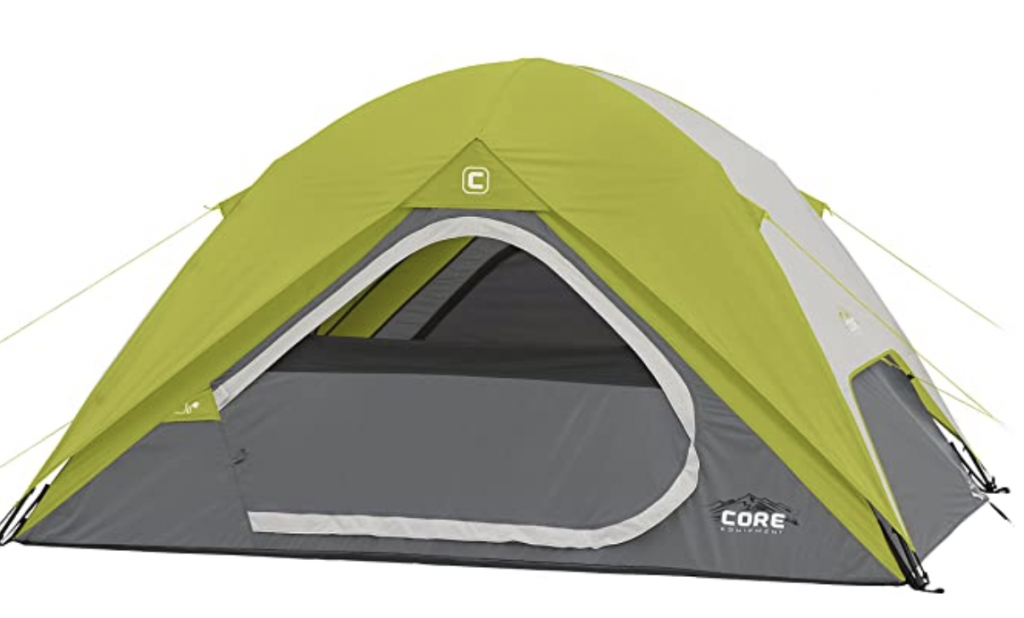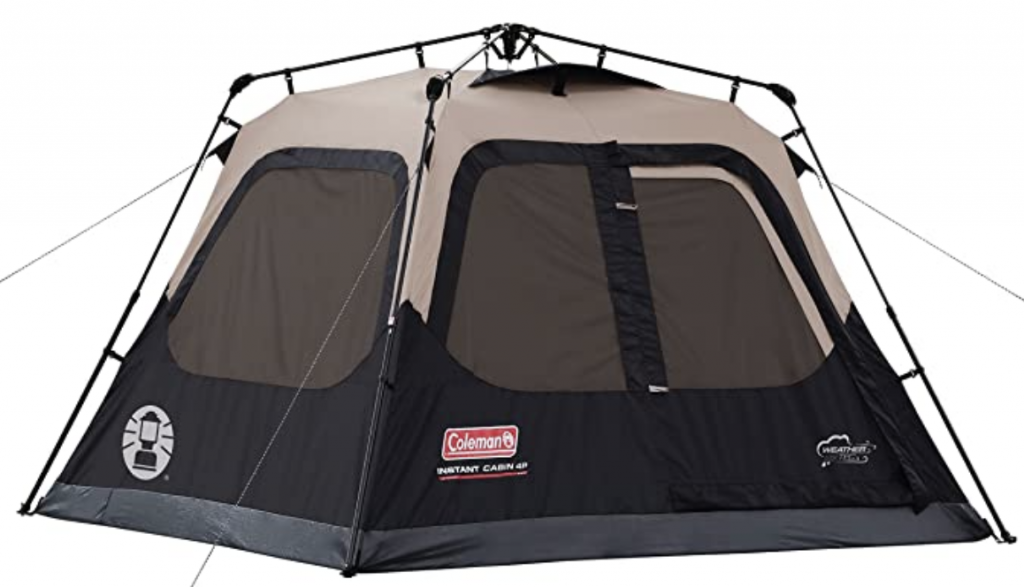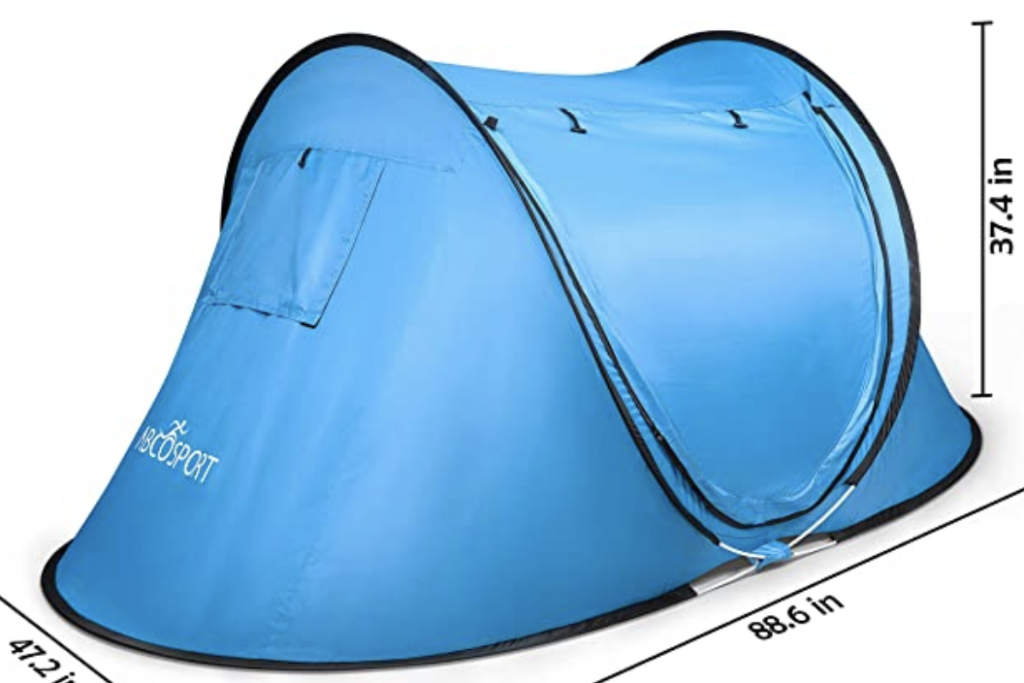Tents are expensive, so it makes sense that you want them to last a long time. I spent 10+ hours researching how durable tents are, what affects their longevity, what you can do to make your tent last longer.
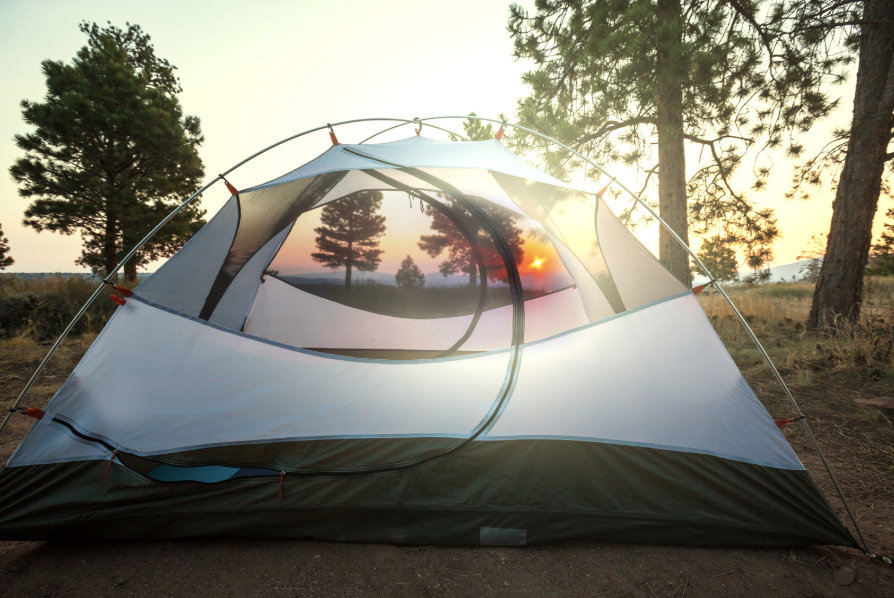
A regular camping tent should last for around 100 camping days. However, there are significant variations. Tent materials, weather conditions, and how you take care of your tent will greatly impact your tent’s durability.
I arrived at this answer based on a combination of personal experience, checking with manufacturers, asking family and friends, and reading through forum answers. Let me expand on this answer below.
How Long Do Tents Usually Last?
You should be able to get 100 days out of a camping tent if you take good care of it. This equates to 10 years if you camp for 10 nights a year and 5 years if you camp around 20 nights a year.
But during my research, I found there’s a wide range of tent lifespans.
Personally, I’ve used my REI 4-person tent for over 80 nights in the past 6 years on summer car camping trips. I took good care of it but didn’t go the extra mile either. It hasn’t leaked, there weren’t any holes in the tent floor, and everything is still working as expected. I have no doubt that I could get 20 more nights out of it.
As I learned about other people’s experiences, I found many have had their tents for more than 100 camping nights, or more than 10 years. So my experience was by no means the exception.
On the other end of the spectrum, I’ve known my friends whose tents only lasted for 2 or 3 trips. What a bummer.
Now let’s dive deeper into what contributes to these differences and what you can do to make your tent more durable.
What Is the Most Durable Tent Material?
I don’t want to bore you with tent design’s technicalities, so feel free to skip this section if you’ve already bought a tent.
But if you are in the market for a new tent, this section can help you find the most durable one.
Large canvas tents are generally much more durable than regular nylon and polyester camping tents.
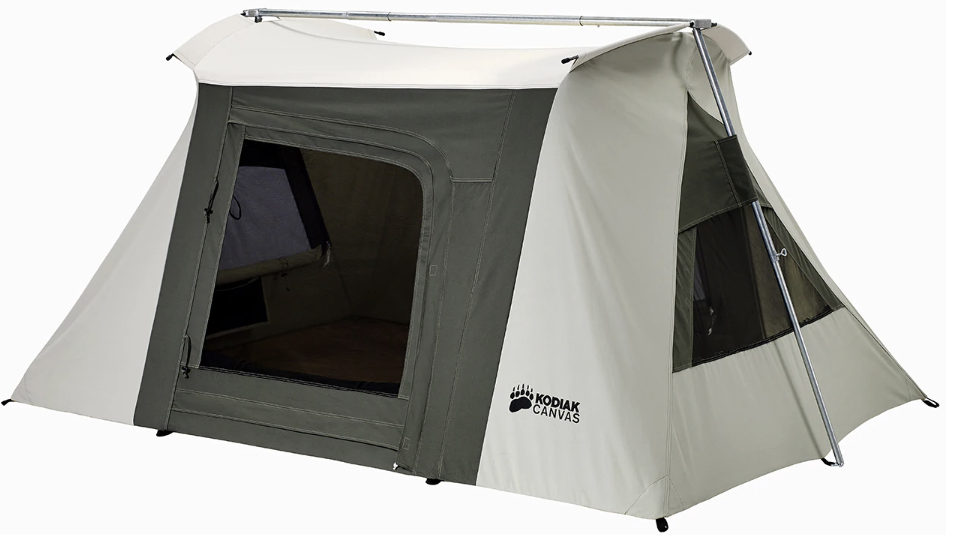
A good canvas tent can last 20 – 30 years for the regular camper and 4 – 5 years if someone lives in it year-round. There are several reasons for such durability:
Canvas tents are made of much thicker fabrics, so you’ll have to worry less about the fabric ripping and leaving holes.
The canvas is also waterproof by itself, so there’s less risk of a coating wearing down.
Finally, some canvas tents come with steel poles, which, as you can imagine, are pretty durable and sturdy.
So if you really want a durable tent, consider getting a canvas tent. Not all canvas tents are enormous, bell-shaped, or for glamping only. Kodiak Canvas offers many options for regular car campers. But make sure you have the budget and don’t mind the hefty weight.
Between nylon and polyester, there isn’t any significant difference in terms of durability. The critical drivers of durability would be the fabric denier and how they are waterproofed.
Denier basically refers to how thick and dense the fabric is. A higher denier usually means the material is stronger. Tent fabrics range from 75D to 150D.
How tents are waterproofed will have a large impact on how durable it appears to be. Most nylon and polyester tents are waterproofed by adding a PU coating. But this coating will degrade over time, causing your tent to leak. I’m sure you don’t want to wake up wet in your tent.
But tent manufacturers have come up with a solution for this. Instead of adding a separate coating to waterproof the fabrics, they directly mix (the technical word is ‘impregnate’) silicone with nylon. The result is Silnylon, an extremely durable and leakproof material.
The downside is that SilNylon tents are usually designed for expedition and are extremely expensive. Check out this article for a more detailed comparison and a list of tents made from Silnylon.
If you want to learn more about tent fabrics, check out this article, where I went into much greater detail about each material’s pros and cons.
Now let’s talk about tent poles. The vast majority of tents in the market have fiberglass or aluminum poles.
Aluminum poles are more durable than fiberglass ones because aluminum is stronger and more flexible. In windy conditions, it will bend instead of break. You can quickly straighten it out.
So if durability is a crucial concern for you, tents with aluminum poles will be your best bet.
Are Instant Tents Durable?
I had this question when I was trying to buy my first tent. After all, a 1-minute or even 10-second setup time is very appealing.
After 5+ hours of research, here’s my conclusion:
Instant tents can be as durable as regular camping tents (lasting more than 100 nights), but they are harder to fix with telescopic poles. Generally speaking, instant dome tents are the most durable, followed by instant cabin tents, and instant pop-up tents are the least durable.
To understand how I got here, let’s take a look at how instant tents work and why you can set it up in seconds (relevant part starts at 2:00):
As you can see, you can set it up quickly because the poles are pre-assembled and already attached to the fabrics. You simply have to extend the telescopic poles.
But due to this complex design, the poles are harder to repair. It’s not like you can just bend it back in shape or connect the broken poles with a pole sleeve.
But the shape and structure of the instant tents have an even more significant impact on their durability. There are 3 main types of instant tents: instant dome tent, instant cabin tent, and instant pop-up tent, shown below from left to right.
The dome tents’ sloping walls make them more durable in windy conditions than cabin tents with taller and straighter walls. Of course, all we said above about pole and fabric materials still affect instant tents’ durability.
Pop-up tents are different. They replaced fiberglass or aluminum poles with an elastic structure that “pops” into place as soon as you take the tent out of its package:
But the elastic “poles” concern me. You have to be extremely careful when folding or collapsing the tent. Otherwise, the “poles” may snap. The pop-up tent I had snapped after about 5 trips, and by that time, I was already familiar with how to fold it.
And you can see how high winds can do some damage to the pop-up tent structure as well.
But I didn’t say all this to dissuade you from getting a pop-up tent. The convenience is truly valuable, and the quality has probably improved a lot since I first tried it.
Pop-up tents may still be the right fit for you if you camp in mild conditions and not too often. They will perform just fine if you don’t beat it up or try to get too many uses out of them.
How Camping Conditions Affect a Tent’s Durability (and What You Can Do About It)
This where you have the most control. How and where you camp will have the largest impact on how long your tent lasts.
Sun
This one may surprise you, but UV rays are highly damaging to your tent. It will break down the waterproof coating on nylon and polyester tents, resulting in leaks. But don’t worry, we got some great tips on how to deal with this:
- Try to find well-shaded campsites. Check maps and reviews to see if the campsite is in a densely wooded area.
- Create more shade by putting up a tarp or canopy
- Leave the rainfly on for most of the day, even if it’s not raining. Replacing a rainfly is much less expensive than replacing an entire tent.
- If you don’t want to or cannot do any of the above, it’s best to put down your tent during the day when you are not at your campsite to avoid UV damage.
Ground Conditions
The tent floor is one of the most vulnerable parts of a tent. It’s directly against a rough surface. If you are not careful, you can see some rips and uneven marks pretty soon. Here are some tips to mitigate this issue:
Try to remove sharp rock or branches from where you plan to set up your tent before setting it up. This should be self-explanatory.
Lay down a ground tarp or use a footprint to protect the bottom of your tent. I know some tents come with thick coating on the bottom and claim that no footprint is needed.
But having a ground tarp or footprint will still reduce the abrasions and make your tent last longer. It’s a no-brainer if you are car camping. A 6′ x 8′ ground tarp will only cost you $20 and weighs less than 3 pounds. That’s a lot cheaper than replacing your tent or feeling the dirt and rainwater seeping into your tent.
The interior of your tent floor needs protection as well. You want to minimize the amount of sand/dirt/stones that get into your tent for less wear and tear. Here are some tips:
- Get a doormat for your tent. For just a few bucks, you can have a space to take off your shoes, avoid bringing dirt into your tent, and save yourself a lot of cleaning time.
- Avoid wearing shoes inside your tent.
- Put a rug inside your tent to collect the dirt and sand so that your tent floor is protected from them.
Rain
A rainy day is probably the last thing you want when spending time outdoors. But things happen. Rainwater can indirectly damage your tent’s fabrics and waterproofing.
The key here is to always store your tent dry. If your tent is wet when you fold it, mold can develop. And cleaning it will be an unpleasant experience that puts more strain on the fabrics.
Reseal your tent seams every 6 – 12 months with some seam sealer or tape the seams. A tent will leak no matter how great the waterproof coating is if there are gaps in the seams. Usually, the seams will be sealed on a brand new tent, but they will become less waterproof over time. It’s better to be safe than sorry.
Wind
Not surprisingly, strong winds can also be quite damaging to your tent by bending or breaking the poles.
Aluminum poles may bend in strong winds, but this is usually easy to repair.
Fiberglass is much more likely to snap since it’s less flexible. Even if you bring a repair kit, I would recommend you put the tent down or get a more wind-resistant one if you anticipate winds greater than 25mph.
So what does 25mph of wind feel like? It’ll be pretty intense with large branches swaying, and you will find it difficult to walk with an umbrella. As a reference, daily wind speeds average around 6 – 12 mph.
I know many tent manufacturers state their tents are windproof for up to much higher limits than 25mph. But I wouldn’t want to test my gear to the limit.
Oceanside
When camping near the ocean, the salt may spray on your tent poles and corrode them. This is more of a problem with aluminum poles than fiberglass ones.
To remove the salt and prevent corrosion, clean the poles with a dry and soft cloth.
And of course, don’t forget to have a rug or doormat to remove the sand.
Other Tent Care and Maintenance Tips
We’ve gone over most care tips above. But there are just a few more important ones:
- Never clean your tent in the washing machine, dryer, or with detergent. It will damage the protective coating and seams of the tent.
- Try to clean the zippers with water to minimize the chances of sand/dirt getting stuck in there.
- Do not keep any food inside your tent. This is not only for bear safety but also to prevent other critters from getting into your tent.

